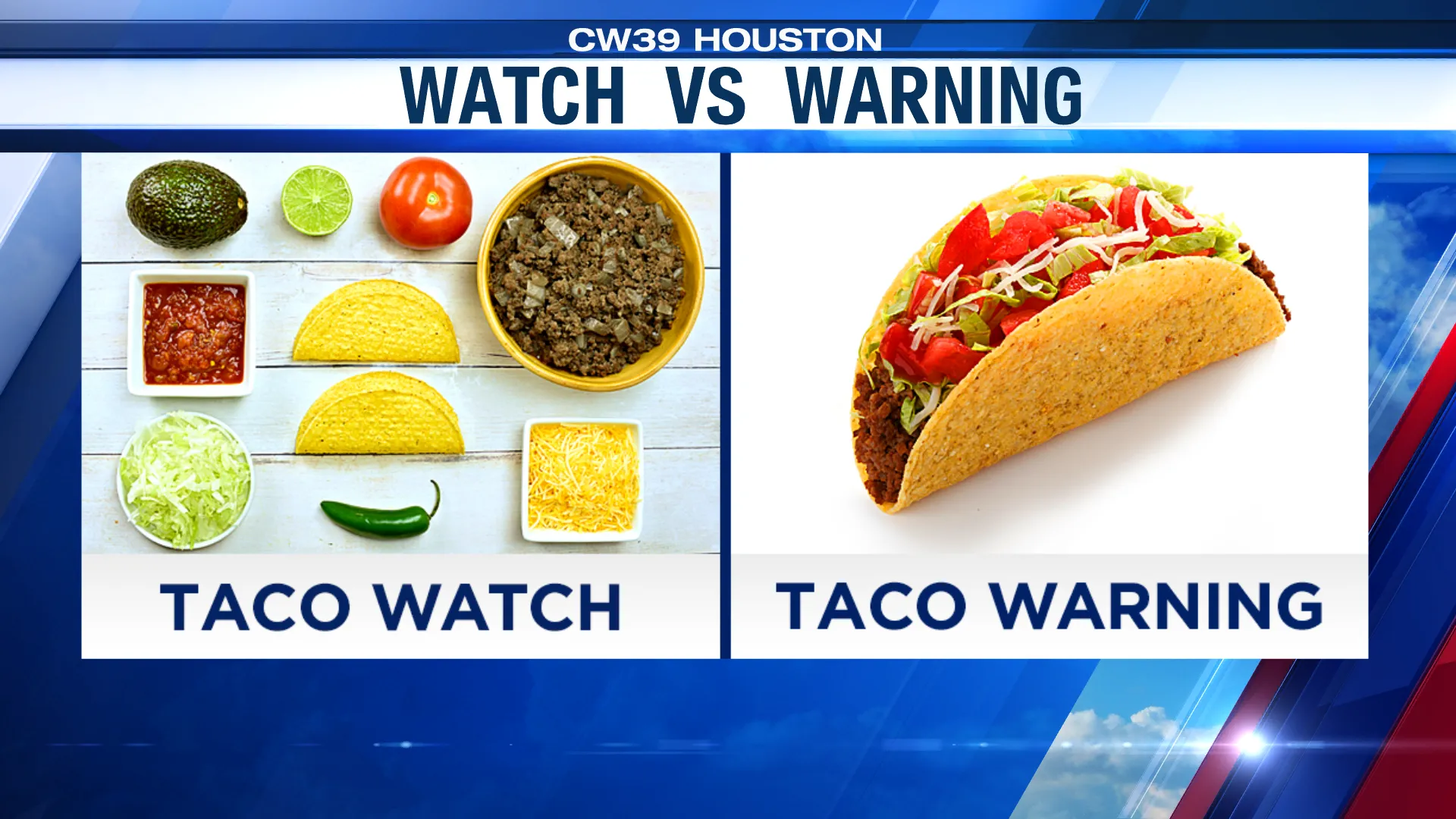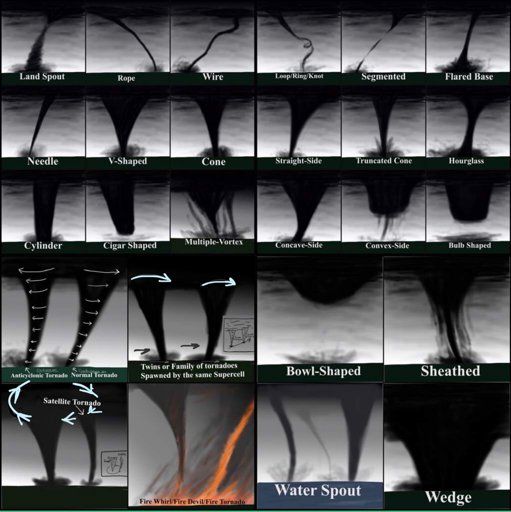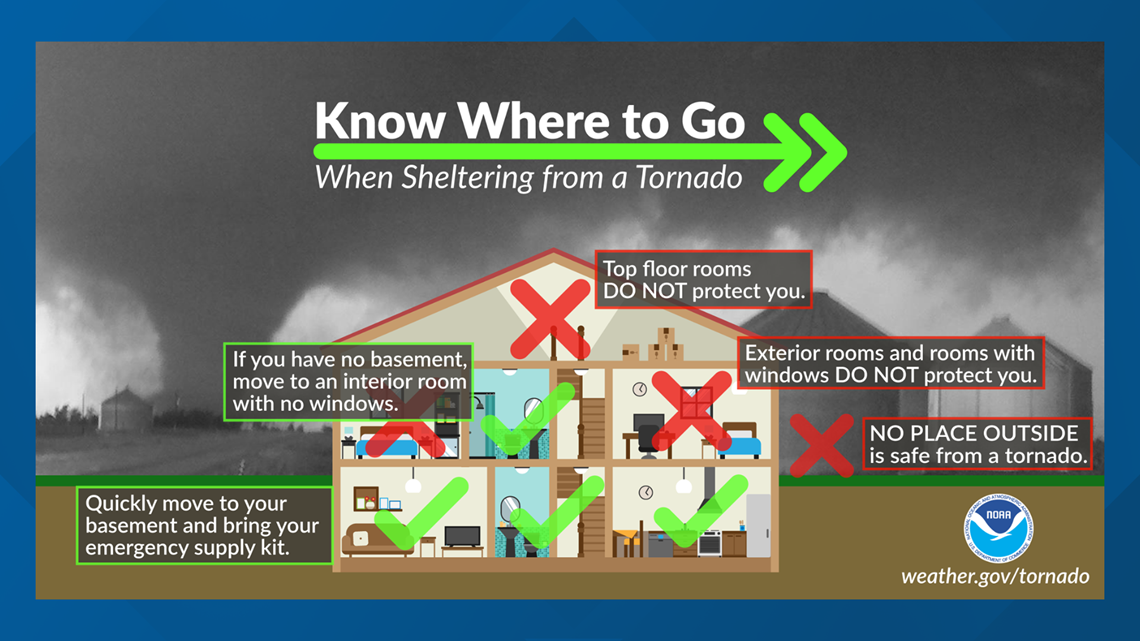Severe Weather Overview
Severe Weather Awareness Week is around the corner for many so what can you do to keep yourself and your family safe?

Many southern states are preparing for their upcoming Severe Weather Awareness Week. The week is usually around the end of February or beginning of March and displays the importance of knowing what to do in cases of severe weather. This week marks the state of Tennessee's Severe Weather Awareness Week, so here's what you need to know.
Severe weather is weather that causes damage, disruption, or loss of life. Severe weather can occur any month of the year, but is more common in the summer months from March-April and October- November. Types of severe weather include severe thunderstorms, tornadoes, flooding, hail, damaging winds, winter weather, and hurricanes. What makes a severe thunderstorm? That's the basis of all severe weather right? A thunderstorm is classified as severe when hail is one inch in diameter or greater, winds gusting greater than 50 knots of 57.5 mph, or a tornado is present. There are also 5 different types of severe weather risk. Risk categories are usually issued a day or hours before the event is expected by the National Weather Service Storm Prediction Center. They range from thunderstorms to high risk.

Its also important to know the difference between watches and warnings. These can occur with many different types of weather year round. A watch is when ingredient for the weather event are there. A warning is when you are actively seeing the event. A winter weather watch is when its possible for winter weather to from. A winter weather warning is when its actively snowing or freezing rain. One way to remember this is the taco way. With a taco watch, you have all the ingredients for tacos. But you don't physically have the tacos until you have a taco warning.

Tornadoes
When you think of severe weather in the south, you typically think of tornadoes. A tornado is a rotating column of air that reaches the ground. They form when warm, humid air collides with cold, dry air. At the same time, winds are moving at different speeds and directions at different parts of the atmosphere that cause rotation to occur. When rotation occurs, it's called a funnel. After the funnel reaches the ground, it is then classified as a tornado.
Tornadoes are measured on the enhanced Fujita scale, which you can find more information about here: Enhanced Fujita Scale.

There are many different types of tornadoes that can occur. 75% of the world's tornadoes occur in the United States, and of those, most occur in tornado alley and dixie alley located in the Midwest and the south. Over 1,000 occur every year in the united states. Tornadoes haven been recorded on every continent except for Antarctica. However, the state of Tennessee see's the most nocturnal tornadoes of anywhere else in the United States, with around half of the tornadoes occurring at night.
This is troubling because its harder for the NWS to warn for tornadoes when there is no visual confirmation on the ground. Its also harder to warn people because most are asleep around these times. No matter when, you always need multiple ways to receive alerts if you're expecting severe weather. If you hear a siren or alert, you need to head to shelter. You can find this in a storm shelter, basement, or in the most interior room in your house. This can be a bathroom or closet. For extra protection, you can also wear a helmet.
Even if you are experiencing damaging winds, it is smart to address it the same as a tornado. Just because the winds aren't rotating, doesn't mean they aren't strong. Winds can reach 100+ mph and can cause just as much damage.

Lightning
Lightning occurs in all thunderstorms. Lightning is a giant spark of electricity between clouds and the ground. The clouds typically hold a negative change while the ground holds a positive charge. The two need to meet together so the charges from the clouds and the ground will try to meet. Once they do, lightning occurs. Thunder is always associated with lightning. Thunder occurs as the atmosphere tries to cool from the rapid heating from lightning, disrupts the soundwaves, and causes them to collapse. If you hear thunder, lightning is always there. That's why if thunder roars, you head indoors.

There are around 3 million lightning flashes a day across the world, or 44 per second. Don't believe the myth that lightning can't strike the same place twice, because it can. Lady liberty is struck by lightning around 600 times per year.
Lightning strikes are about the width of your thumb and hotter than the surface of the sun. During thunderstorms, head inside, Be sure to stay away from plumbing and electrical so you don't get electrocuted.
Flooding
Flooding is experienced in every state in the country and every place in the world that receives rain. There are multiple types of flooding that can occur, but the main three are river flooding, flash flooding, and coastal flooding. It occurs when a lot of water accumulates, either at one time or gradually, and the ground does not have the capability to soak it up. This leaves inches, or sometimes feet of water, sitting on top of the surface.
Flooding is the most common natural disaster, averaging around 114 deaths per year. it can occur any month of the year but often occurs during late winter and spring due to melting snowfall of heavy rainfall. Different parts of the coutnry are at risk during different parts of the year. Floods are also the most common of any weather-related natural disaster. Most fatalities also occur while driving.

It only takes 6 inches of moving water to knock an adult off their feet. It only takes 2 feet of water to sweep away a car. The best thing to do in the chance of a flood is to get to higher ground and, turn around, don't drown.
Hail
Hail is another type of precipitation that causes a lot of damage. Hail is frozen ice that forms in thunderstorm updrafts. The stones act as lottery ball machines, being thrown around the cloud and consistently accumulating more ice until it is too heavy to be carried and it drops. Hail can occur anywhere in the world. The only place that sees more hail than the United States is Kenya. In the United States, a series of states called "hail alley" see the most - Texas, Oklahoma,Colorado, Kansas, Nebraska, and Wyoming.
Hail can range anywhere from 1/4th and inch up to 4.5 inches and greater. Hail in this part of the country is most common during May and june but often brings damage to crops, homes, and livestock. The largest hailstone recorded in the United States was 8 inches in diameter and was captured in Vivian, South Dakota in 2010.

If you see or hear hail at home, its best to get away from all windows and into an interior room. If you are in a car, pull over and stay in the car. If it is quarter sized or larger, turn your back away from the windshield to reduce the amount of damage to your body.



